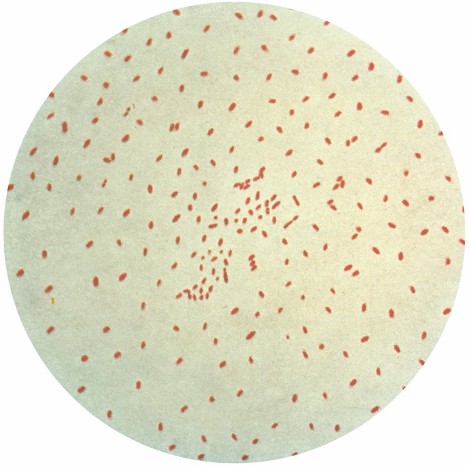Excellent scientists at Creative Biolabs can provide our customers with comprehensive, one-stop services based on their years of expertise in antibody production.
What is Pertussis?
Pertussis, widely known as whooping cough or the 100-day cough, is a very contagious bacterial infection. Following the pandemic of 1578, French physician Guillaume de Baillou made the first official description of this illness, in the following years, Jules Bordet and Octave Gengou discovered and isolated the pertussis-causing agent in 1906.
A runny nose, fever, and slight cough are typical initial symptoms, but these are soon followed by two to three months of violent coughing episodes. When the coughing episode is over, the person may breathe in with a high-pitched whoop or gasp. The term 100-day cough refers to a prolonged period of intense coughing that may last 10 weeks or longer. Coughing so forcefully might cause nausea, broken ribs, or extreme exhaustion. Infants younger than a year old may have little to no coughing and instead experience spells of difficulty breathing. Typically, seven to ten days pass from the moment of infection to the onset of symptoms.
What Causes Pertussis?
The cause of pertussis, sometimes known as whooping cough, is a gram-negative, aerobic, pathogenic, encapsulated coccobacillus of the genus Bordetella. In 2003, the 4,086,186 base pair genome of Bordetella pertussis (B. pertussis) was published, whose size is considerably smaller than that of the closest relative B. bronchiseptica.
Similar to B. bronchiseptica, B. pertussis has a flagellum-like shape and can be mobile. Pertussis toxin, adenylate cyclase toxin, filamentous haemagglutinin, pertactin, fimbria, and tracheal cytotoxin are the components resulting in its virulence. The bacterium is dispersed by airborne droplets, and it typically takes 7 to 10 days for incubation (range 6–20 days). The only known reservoir for B. pertussis is humans. Both the lack of the ability to survive outside of a host body and adaptation to one host species (humans) are the main causes.
 Fig.1 Gram stain of the bacteria B. pertussis. (Wikipedia)
Fig.1 Gram stain of the bacteria B. pertussis. (Wikipedia)
Antibody About Pertussis
The primary protective antigen produced by B. pertussis, pertussis toxin (PTx), is present in all contemporary acellular vaccines. Among a number of well-researched monoclonal antibodies targeting this toxin, numerous investigations indicate that the humanized hu1B7 and hu11E6 antibodies have demonstrated a high level of protection in vitro and in vivo. It seems that the primary neutralizing mechanism of hu1B7 involves blocking PTx internalization and retrograde trafficking. On the other hand, the main strategy used by hu11E6 is to competitively inhibit the PTx binding to its cellular receptor via receptor binding tests and cellular imaging. These findings are coincident with the model in which hu1B7 and hu11E6, respectively, block the retrograde trafficking and receptor binding of PTx.
Creative Biolabs is a well-known biotechnology firm with a talented staff of educated researchers and well-established technologies. For all your questions about antibody production, please feel free to contact us for more details about your Pertussis project.
Other Antibody Products
- Acquaye-Seedah, E.; et al. Humanised monoclonal antibodies neutralise pertussis toxin by receptor blockade and reduced retrograde trafficking. Cellular Microbiology. 2018, 20: e12948.